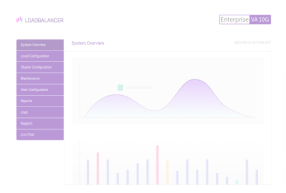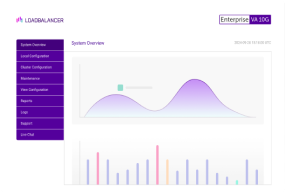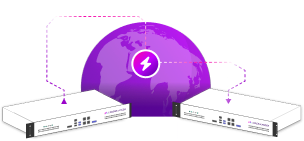Load balancing Nutanix Object Storage
Benefits of load balancing Nutanix Object Storage
Load balancing is an integral part of the Nutanix Object Storage architecture, ensuring optimal performance, availability, and scale:
- High Availability (HA): Load balancing ensures that Nutanix Object Storage remains accessible even if a component fails. The load balancers act as a single point of access. If an Object Controller (Worker VM) fails, the load balancer automatically stops sending requests to the failed component and redirects traffic to the remaining healthy ones. This maintains uninterrupted data access for S3 clients. Load balancers continuously monitor the health of the underlying Object Store workers and seamlessly reroute traffic during an outage, providing high availability for the entire object storage service.
- Optimized performance and scalability: Load balancing intelligently distributes incoming client requests across multiple worker nodes, preventing performance bottlenecks and enabling linear scaling. Requests are distributed evenly across all available Object Controller (Worker) VMs using methods like round-robin DNS, ensuring no single worker is overwhelmed. This prevents latency and maximizes throughput. As your data and workload demands grow, you can add more Object Worker VMs. The load balancer instantly includes the new workers in the distribution pool, allowing the object store to scale horizontally and increase overall performance capacity in a predictable manner.
- Simplified client access and management: Load balancing simplifies how clients connect to the object store and how administrators manage the environment. Clients connect to a single, consistent IP address or FQDN (provided by the load balancer), abstracting the complexity of the distributed, multi-worker backend. Administrators can take individual worker nodes offline for maintenance, upgrades, or troubleshooting without impacting the overall service. The load balancer simply directs traffic to the remaining nodes, allowing for zero-downtime operations.
About Nutanix Object Storage
Nutanix Objects Storage is a scalable and distributed storage system offered by Nutanix, designed for storing and managing large volumes of unstructured data, such as documents, images, videos, and backups.
The Nutanix Objects Storage application uses object-based storage architecture and features like data replication, data tiering, and data protection to ensure high availability, data durability, high-performance and reliability for enterprise.
Why Loadbalancer.org for Nutanix Object Storage?
Loadbalancer’s intuitive Enterprise Application Delivery Controller (ADC) is designed to save time and money with a clever, not complex, WebUI.
Easily configure, deploy, manage, and maintain our Enterprise load balancer, reducing complexity and the risk of human error. For a difference you can see in just minutes.
And with WAF and GSLB included straight out-of-the-box, there’s no hidden costs, so the prices you see on our website are fully transparent.
More on what’s possible with Loadbalancer.org.
How to load balance Nutanix Object Storage
The load balancer can be deployed in four fundamental ways: Layer 4 DR mode, Layer 4 NAT mode, Layer 4 SNAT mode, and Layer 7 Reverse Proxy (Layer 7 SNAT mode).
For Nutanix Object Storage, Layer 7 Reverse Proxy is recommended.
Virtual service (VIP) requirements
To provide load balancing and HA for Nutanix Object Storage, 2 VIPs are required, one for HTTP traffic and the other for HTTPS traffic.
Load balancing deployment concept
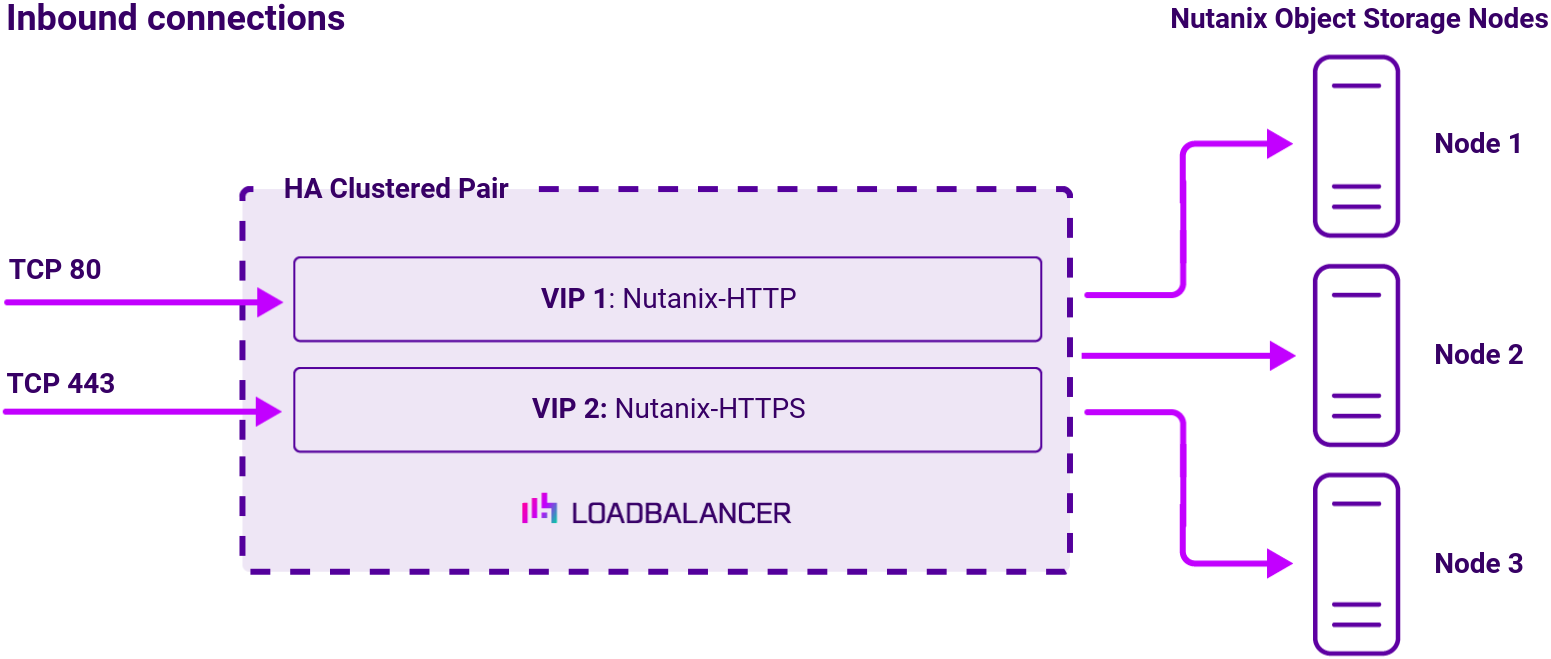
Note
The load balancer can be deployed as a single unit, although Loadbalancer.org recommends a clustered pair for resilience and high availability.
Load balancing topology
Layer 7 Reverse Proxy can be deployed using either a one-arm or two-arm configuration. For two-arm deployments, eth1 is typically used for client side connections and eth0 is used for Real Server connections, although this is not mandatory since any interface can be used for any purpose.
For more on one and two-arm topology see Topologies & Load Balancing Methods.
About Layer 7 Reverse Proxy load balancing
Layer 7 Reverse Proxy uses a proxy (HAProxy) at the application layer. Inbound requests are terminated on the load balancer and HAProxy generates a new corresponding request to the chosen Real Server. As a result, Layer 7 is typically not as fast as the Layer 4 methods. Layer 7 is typically chosen when either enhanced options such as SSL termination, cookie based persistence, URL rewriting, header insertion/deletion etc. are required, or when the network topology prohibits the use of the Layer 4 methods.
The image below shows an example Layer 7 Reverse Proxy network diagram:
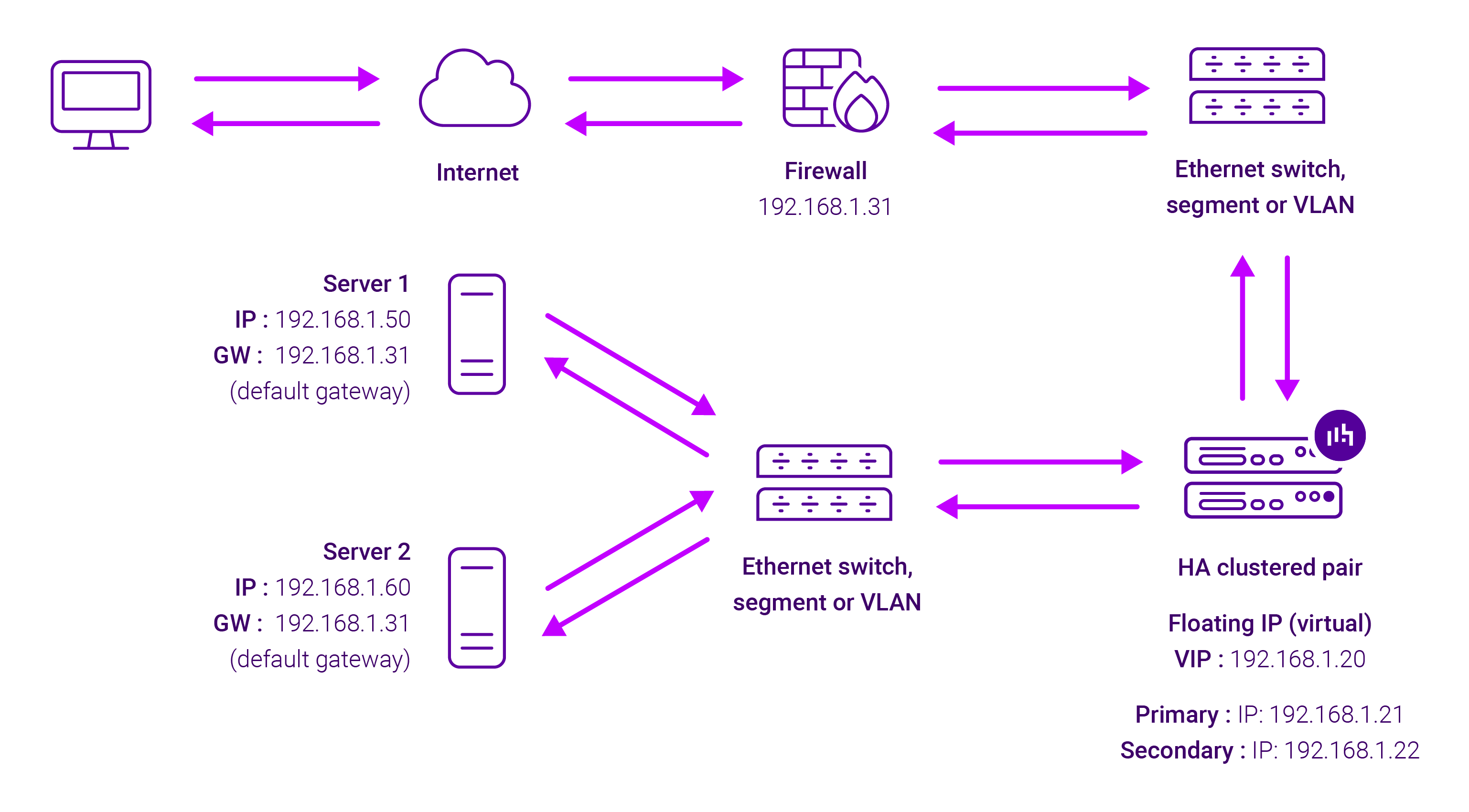
Because Layer 7 Reverse Proxy is a full proxy, Real Servers in the cluster can be on any accessible network including across the Internet or WAN.
Layer 7 Reverse Proxy is not transparent by default, i.e. the Real Servers will not see the source IP address of the client, they will see the load balancer’s own IP address by default, or any other local appliance IP address if preferred (e.g. the VIP address).
This can be configured per Layer 7 VIP. If required, the load balancer can be configured to provide the actual client IP address to the Real Servers in 2 ways. Either by inserting a header that contains the client’s source IP address, or by modifying the Source Address field of the IP packets and replacing the IP address of the load balancer with the IP address of the client. For more information on these methods, please refer to Transparency at Layer 7 in the Enterprise Admin Manual. e RIP:PORT combination for Layer 7 SNAT mode VIPs and Layer 4 SNAT mode VIPs because the required firewall rules conflict.









